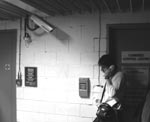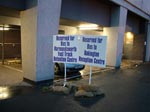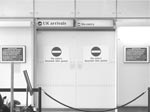| |
Orienting the Future: Design Strategies for Non-Place
Non-places are the everyday spaces of late-capitalist cities, such as airports, malls, supermarkets, and motorways. In contrast to traditional places, where orientation and belonging are based on sedentary and localized inhabitation, non-places are designed to be experienced by transitory and mobile shoppers, commuters, corporate nomads, tourists, itinerants, migrants, and virtual workers.
Complaints about non-place commonly identify a loss of personal identity, a decline in meaningful relations amongst the users of spaces, and the forgetting of history. One design response to these deficits is to restore identity, relations and memory: to make non-places more homely. A second category of response yields to the grain of non-places, examining the crevices and interstices of
non-place, its flows and resistances, micro-practices and thresholds, to
provoke liberating and finely-honed design responses.
< back |
|




